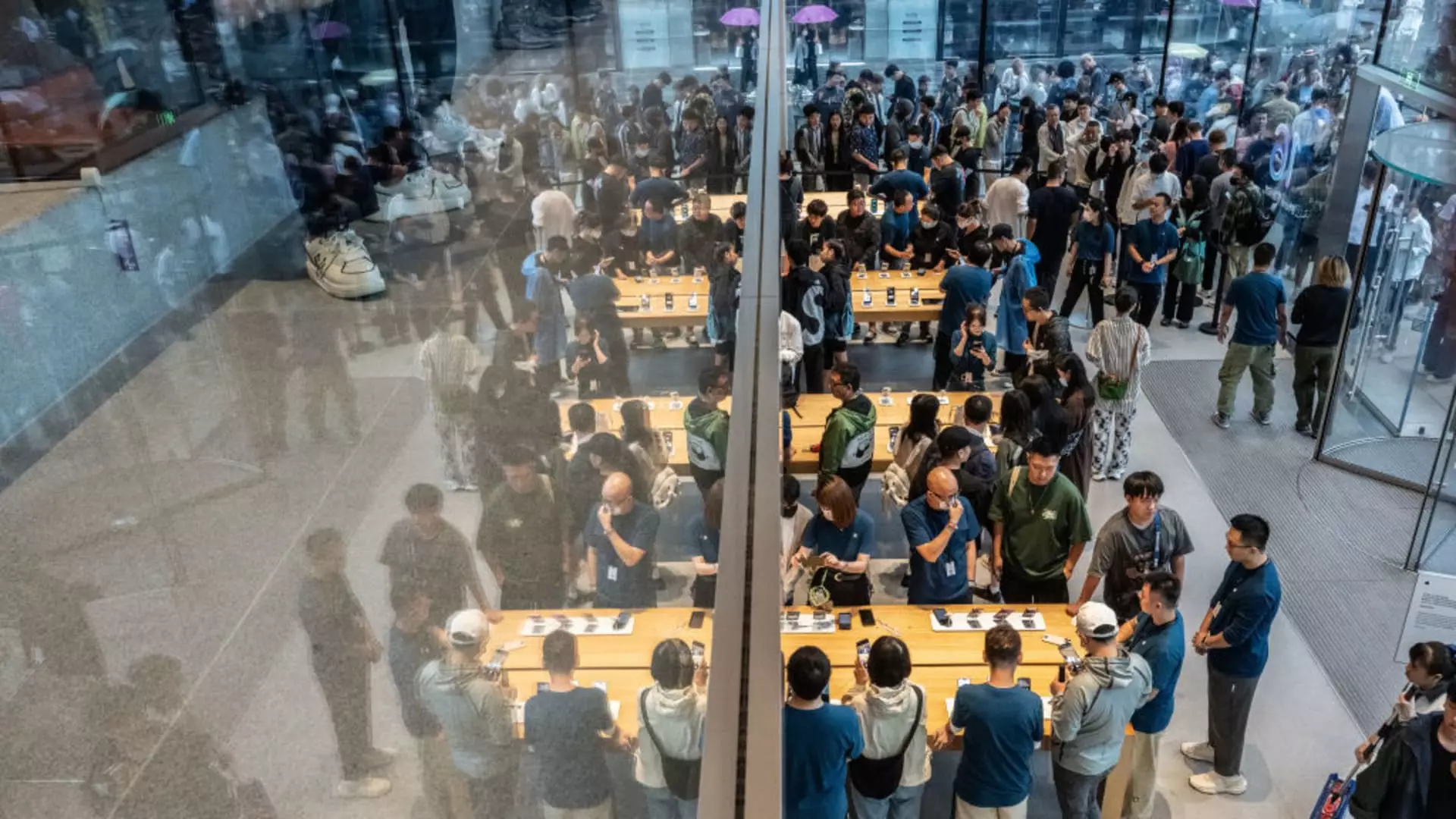As the smartphone market in China evolves, it has become increasingly clear that consumer preferences are shifting in dynamic and complex ways. Recent observations during the launch of Apple’s iPhone 16 and Huawei’s Mate XT trifold phone illustrate a competitive landscape that is not only shaped by pricing and features but also affected by the broader geopolitical context. This article aims to analyze the implications of these recent developments and explore the changing priorities of affluent Chinese consumers.
Historically, Apple has maintained a strong presence in China’s premium smartphone market. However, recent data indicates that the tides are turning. Following U.S. sanctions imposed on Huawei in 2019, the competition shifted significantly. According to Canalys, Huawei successfully regained a foothold, ranking fourth in smartphone market share within China for the second quarter of 2023. Meanwhile, Apple found itself dropping out of the top five, marking a rare moment where domestic brands monopolize the leading spots in the market.
This reshuffling of market leadership is not merely a statistical anomaly; it highlights the growing preference for local brands among Chinese consumers. The ability of Huawei to rebuild its smartphone business post-sanctions speaks volumes about the brand’s resilience and innovation in a highly competitive environment. On the other hand, Apple’s departure from the top tier may signal a need for strategic reevaluation, as the brand grapples with increasingly challenging market conditions.
The consumer behavior observed during the launch of both flagship phones reflects an aspirational yet practical mindset. During CNBC’s spot checks at retail locations, it was noted that a significant number of iPhone users expressed interest in both Huawei and Apple devices. Out of 10 individuals interviewed, eight were considering both options, indicating a shift towards a more pragmatic approach to smartphone purchases.
Affluent consumers, particularly in urban centers like Beijing, appear to be exploring alternatives to the traditional premium offerings. Huawei’s Mate XT, priced above $2,800, price-wise represents a substantial investment. However, the premium features, such as its unique trifold design, have attracted consumers like Yang, who expressed a desire to experiment with new technology despite currently using an iPhone.
Interest in the Mate XT highlights the advanced features that some consumers perceive as lacking in Apple’s offering. It raises essential questions regarding the features that consumers value most in their smartphones, suggesting an opportunity for both brands to innovate and create devices that meet evolving needs.
The stark price differences between the two new launches emphasize a broader trend in consumer electronics, particularly in China. On secondhand platforms like Xianyu, the resale prices of the Mate XT soared to astronomical levels, ranging from $7,100 to $8,520, while the iPhone 16 Pro Max sat at much lower resale values. This trend indicates not only a robust demand for the trifold phone but also the perceived value that consumers are willing to attach to it.
Additionally, the observation that some consumers at the Huawei store were mainly purchasing phones for resale purposes suggests a lucrative unofficial market, revealing deeper strategic considerations for both companies. This emergent behavior further complicates the competitive landscape, as brands need to consider indirect channels of demand in their strategy formulations.
The contrasting reactions observed during both launches also provide significant insights into consumer sentiment. In sharp contrast to the lines outside Apple stores, where eager customers began queuing before dawn, Huawei’s stores displayed a calmer atmosphere. Despite Huawei’s established fan base, the engagement levels did not seem to match those of Apple, indicating a mix of hesitance and strategic buying behaviors among potential customers.
Interestingly, even those loyal to Apple expressed an openness to consider Huawei’s offerings. The case of Wang, the first in line at the Apple store, who indicated an interest in trying the Huawei phone as well, exemplifies how consumer loyalty is increasingly susceptible to the allure of cutting-edge innovation and improved features.
The competition between Apple and Huawei highlights a complex interplay of consumer preferences, market strategies, and broader geopolitical influences. As consumer expectations evolve, both brands must be attuned to the signals coming from their target demographics and be prepared to innovate rapidly to retain their market positions. The ongoing shifts in the smartphone landscape in China serve as a microcosm of broader trends in global technology, making it imperative for companies to navigate this environment thoughtfully and strategically.

